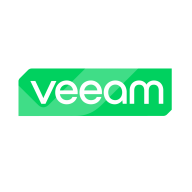

Instana Infrastructure Monitoring and Veeam Data Platform compete in IT environment solutions, with Instana showing strengths in real-time monitoring and anomaly detection, while Veeam excels in data protection and recovery. Instana is favored for dynamic application monitoring, whereas Veeam is valued for its robust data management features.
Features: Instana Infrastructure Monitoring offers automatic discovery, real-time insights, and anomaly alerts suitable for microservices architectures. Veeam Data Platform provides powerful backup, recovery, and replication, supporting effective data protection strategies. Instana targets organizations requiring detailed application performance metrics, while Veeam focuses on strong data-centric functionality and security.
Ease of Deployment and Customer Service: Instana provides a streamlined deployment process integrating easily with cloud-native environments and offers comprehensive customer guidance. Veeam's setup is slightly more complex but is accompanied by exceptional support and continuously updated documentation. Instana simplifies multi-cloud monitoring, whereas Veeam benefits from an extensive partner network for assistance.
Pricing and ROI: Instana is known for a cost-effective setup with favorable ROI for real-time monitoring of complex systems. Veeam requires higher initial investment but provides significant returns in business continuity, making it appealing for organizations prioritizing security and data integrity.


Instana ensures that your application delivery organization has the data, visibility and information they need to manage the performance of critical business applications across the DevOps lifecycle. Built to handle the dynamic nature of containerized, microservice architectures, Instana automates infrastructure and application monitoring helping you to ensure the performance and quality of custom applications and accelerate your CI/CD cycle.
Veeam Data Platform ensures comprehensive data resilience by offering secure backups and intelligent data insights, catering to the complexities of modern data management.
Veeam Data Platform empowers businesses with reliable data protection, orchestrated recovery, and streamlined management. Providing peace of mind, it guarantees data is secure, available, and effortlessly recoverable. Organizations benefit from features such as instant recovery, simplified management, and compatibility with virtual environments. While it shines in backup and restore capabilities, it calls for improvements in integration with physical servers and enhanced cyber security features.
What are the key features of Veeam Data Platform?Organizations in industries like finance, healthcare, and manufacturing utilize Veeam Data Platform for critical data management, ensuring business continuity and disaster recovery. Employed in securing both virtual and physical workloads, Veeam integrates cloud storage for enhanced scalability and efficiency.
We monitor all Cloud Monitoring Software reviews to prevent fraudulent reviews and keep review quality high. We do not post reviews by company employees or direct competitors. We validate each review for authenticity via cross-reference with LinkedIn, and personal follow-up with the reviewer when necessary.